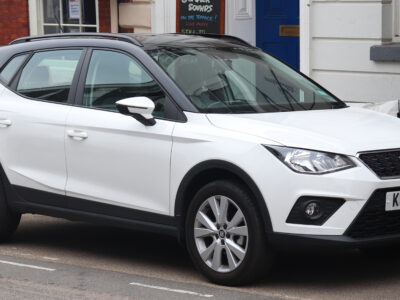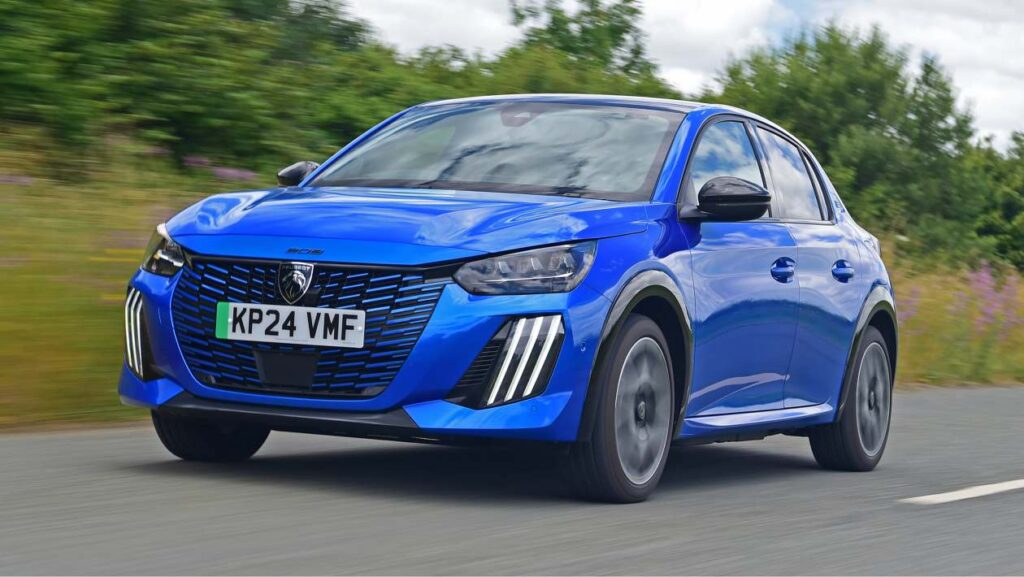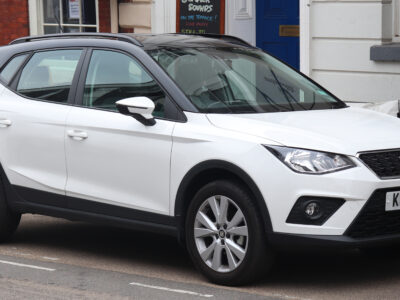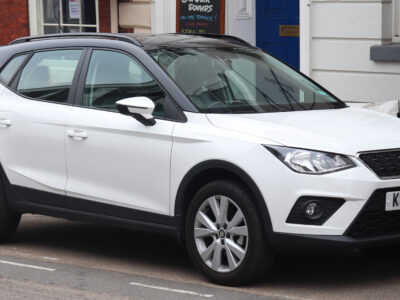
Peugeot 208 Boot Space: Full Guide to Capacity, Dimensions & Comparisons (2025)

The Peugeot 208 is a compact hatchback that strikes a delicate balance between style, efficiency, and practicality. But how does it really perform when it comes to boot space? Whether you’re considering the petrol, diesel, or the fully electric e-208, understanding its cargo capacity is essential before making a purchase.
In this complete guide, we’ll break down Peugeot 208’s boot dimensions, compare it with competitors, and show how it has evolved through generations—helping you decide if it truly fits your lifestyle.
- Peugeot 208 Boot Capacity Overview
- Boot Space in Different Configurations
- Peugeot 208 Boot Space by Generation
- Peugeot 208 vs e-208: Cargo Comparison
- Peugeot 208 vs Other Peugeot Models
- Peugeot 208 vs Similar Hatchbacks
- Boot Space Practicality and Layout
- Is the Peugeot 208 Practical for Families?
- Final Verdict
- FAQs
Peugeot 208 Boot Capacity Overview
The current Peugeot 208 (2023–2025) generation offers a boot capacity of 352 litres. This measurement applies to the petrol and diesel variants. The electric e-208, due to its battery pack layout, slightly reduces the figure to 309 litres.
When you fold the rear seats, the total available cargo volume increases dramatically to around 1,163 litres, measured from the boot floor to the roofline—making it one of the more versatile superminis on the market.
Boot Space in Different Configurations
| Configuration | Boot Space (litres) | Notes |
|---|---|---|
| Standard (Seats Up) | 352 L | Petrol/Diesel versions |
| Standard (Seats Up – Electric) | 309 L | e-208 model |
| Rear Seats Folded | Up to 1,163 L | Measured to roof |
| Rear Seats Folded (Electric) | Approx. 1,100 L | Slightly less due to battery layout |
This flexibility means you can easily fit large suitcases, pushchairs, or shopping loads for daily use, and still have space to spare when the rear seats are down.
Peugeot 208 Boot Space by Generation
Peugeot has refined its small hatchback through multiple generations. Here’s how the boot size evolved over time:
| Generation | Model Year | Boot Capacity |
|---|---|---|
| 1st Generation | 2012 | 285 L |
| 1st Generation (Facelift) | 2015 | 285 L |
| 2nd Generation | 2019 | 309 L |
| 2nd Generation (Facelift) | 2023 | 352 L |
Increase over time:
Between 2012 and 2023, the Peugeot 208’s boot capacity grew by 67 litres, representing nearly a 24% improvement in practical storage space.
Peugeot 208 vs e-208: Cargo Comparison
The electric e-208 sacrifices a small portion of its luggage capacity due to the placement of its battery module beneath the floor.
You may be interested in reading How to Reset the Service Light on a Peugeot 208: Complete Step-by-Step Guide
How to Reset the Service Light on a Peugeot 208: Complete Step-by-Step Guide| Variant | Boot Capacity | Difference |
|---|---|---|
| Peugeot 208 (Petrol/Diesel) | 352 L | — |
| Peugeot e-208 (Electric) | 309 L | −43 L |
Despite this reduction, the e-208 remains competitive, thanks to its smart underfloor storage and split-folding rear seats.
Peugeot 208 vs Other Peugeot Models
Within the Peugeot family, the 208 is one of the smallest hatchbacks—but it still offers solid practicality compared to larger siblings.
| Peugeot Model | Boot Space (L) |
|---|---|
| e-Expert Kombi | 3,061 L |
| e-Traveller | 1,624 L |
| Rifter | 775 L |
| 5008 | 748 L |
| 308 SW | 551 L |
| 508 SW | 530 L |
| 3008 | 520 L |
| 408 | 471 L |
| 2008 | 434 L |
| 208 | 352 L |
| e-208 | 309 L |
While compact, the 208’s cargo space is still adequate for urban drivers who value a nimble car that doesn’t compromise much on practicality.
Peugeot 208 vs Similar Hatchbacks
Here’s how the Peugeot 208’s boot space compares against some of its closest rivals in 2025:
| Model | Boot Space (L) | Difference vs 208 |
|---|---|---|
| Sono Motors Sion | 650 | +298 L |
| Skoda Scala | 467 | +115 L |
| VW T-Cross | 455 | +103 L |
| MG ZS | 448 | +96 L |
| VW Taigo | 440 | +88 L |
| Suzuki S-Cross | 430 | +78 L |
| Hyundai Bayon | 411 | +59 L |
| SEAT Arona | 400 | +48 L |
| Hyundai i30 | 395 | +43 L |
| Jeep Avenger | 380 | +28 L |
| Peugeot 208 | 352 | — |
| BYD Dolphin | 345 | −7 L |
| MG MG3 | 293 | −59 L |
| Mazda 2 Hybrid | 286 | −66 L |
| Fiat Topolino | 63 | −289 L |
As seen, the 208 stands mid-range among small hatchbacks. While not class-leading, it delivers a practical balance of boot size and overall compactness—ideal for city dwellers.
Boot Space Practicality and Layout
- Wide Tailgate Opening: The 208’s boot is square-shaped with a wide aperture, making it easy to load bulkier items.
- Flat Load Floor: When seats are folded, the load floor remains mostly flat—perfect for longer objects.
- Hidden Compartments: Small cubbies beneath the boot floor can store cables (in e-208) or emergency kits.
- Split-Folding Rear Seats: Standard 60/40 seat split allows flexible space usage.
For daily tasks—shopping, weekend trips, or even light luggage—the 208 proves more practical than its compact proportions might suggest.
Is the Peugeot 208 Practical for Families?
For small families or couples, the Peugeot 208 offers enough space for day-to-day errands, short vacations, and kids’ gear. However, those with larger families might find the Peugeot 2008 SUV or Peugeot 308 SW more accommodating.
That said, the 208’s 352 L boot is still capable of holding:
You may be interested in reading How to Reset the Service Light on a Peugeot 208: Complete Step-by-Step Guide
How to Reset the Service Light on a Peugeot 208: Complete Step-by-Step Guide Peugeot 208 Tyre Pressure Reset: Step-by-Step TPMS Light Guide (2012–2019)
Peugeot 208 Tyre Pressure Reset: Step-by-Step TPMS Light Guide (2012–2019)- Two medium-sized suitcases
- A folded stroller
- Weekly grocery bags
Its clever layout and low loading lip add convenience for urban living.
Final Verdict
The Peugeot 208 boot space might not be the largest in its class, but it’s smartly engineered for real-world use. With 352 litres of capacity, foldable rear seats, and a flat load floor, it delivers solid practicality for a city hatchback.
The e-208’s 309 litres is still respectable, and Peugeot’s packaging ensures minimal compromise for electric buyers.
In short: if you’re seeking a stylish, efficient, and surprisingly roomy small hatchback, the Peugeot 208 stands as a well-balanced choice in 2025.
FAQs
1. How big is the Peugeot 208 boot space?
The Peugeot 208 has a boot capacity of 352 litres, or 1,163 litres with the rear seats folded.
2. Is the Peugeot e-208’s boot smaller?
Yes. The electric e-208 offers 309 litres due to battery packaging.
3. Can a large suitcase fit in a Peugeot 208?
Yes, the boot accommodates one large and one medium suitcase comfortably.
4. How does the 208 compare with the Skoda Scala?
The Scala has 467 litres, around 115 litres more than the 208, making it better for luggage-heavy users.
 How to Reset the Service Light on a Peugeot 208: Complete Step-by-Step Guide
How to Reset the Service Light on a Peugeot 208: Complete Step-by-Step Guide Peugeot 208 Tyre Pressure Reset: Step-by-Step TPMS Light Guide (2012–2019)
Peugeot 208 Tyre Pressure Reset: Step-by-Step TPMS Light Guide (2012–2019) Peugeot 208 Dashboard Warning Lights and Symbols Explained (2012–2024)
Peugeot 208 Dashboard Warning Lights and Symbols Explained (2012–2024)5. Is the Peugeot 208 good for families?
Yes—for small families or couples, the 208 provides enough practicality without feeling cramped.
If you want to know other articles similar to Peugeot 208 Boot Space: Full Guide to Capacity, Dimensions & Comparisons (2025) you can visit the category Service and Parts.
Deja una respuesta






More content of your interest